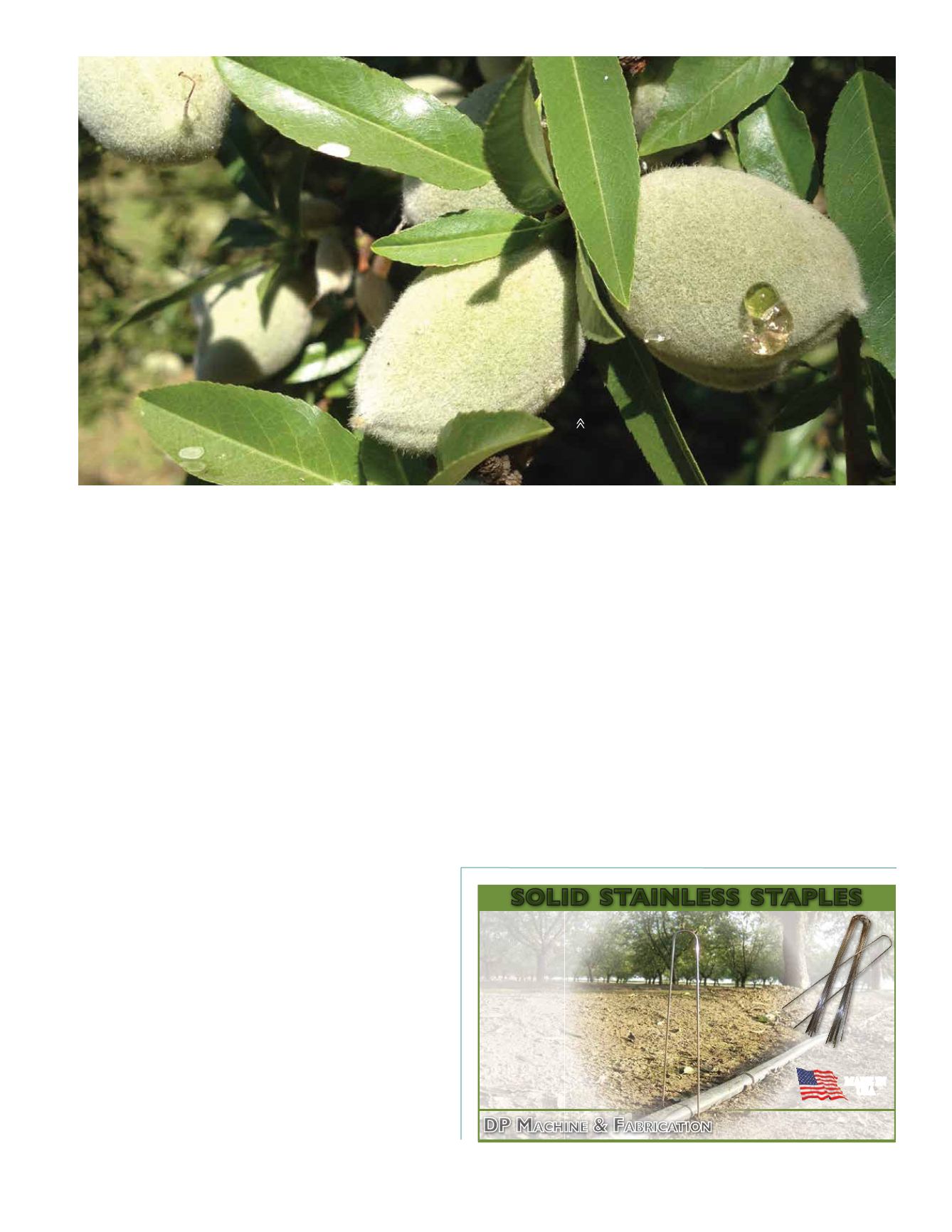
MARCH | APRIL 2015
Almond Facts
45
SOLID STAINLESS STAPLES
DP M
ACHINE
& F
ABRICATION
Sales: Jennifer (661) 746-6242
(661) 203-5544
/HQJWK
For
Safe
and
Secure
Drip
Line Placement
*UDGH /
5HVLVWV &RUURVLRQ
from
Acidic Water & Fertilizers
in All Soil Types
5HGXFH /DERU
2QH 7LPH ,QVWDOO
compared to Using Plain
or Coated Staples
6DYH 0RQH\
$YRLG
Constant Hose &
Fitting
Repairs
MADE IN
USA
Clear gumming exuding from the hull of the almond may
indicate feeding by leaf footed plant bug. If scraped away, a
small hole should be visible piercing through the hull into the
developing kernel. Photo courtesy of S. Vasquez.
for rust. Orchard history, cultivar, and irrigation systems
should be factors in determining the need for treatment.
Insect concerns include San Jose Scale (SJS), Peach Twig
Borer (PTB), and Leaf-footed Plant Bug (LPB). With the
warmer spring, male emergence for SJS and the biofix
for PTB will be earlier. Therefore, the traditional "May
Spray" timing may also be earlier. Timing of a growth
regulator for SJS control should be 400 DD after the
male flight. A spring treatment for PTB should be made
400-500 DD after the biofix. Keep in mind that the PTB
timing often overlaps with the spring flight of NOW. If
timed properly, this spray could provide early season
control for both pests.
LPB is erratic and hard to predict. Research does suggest
that over-wintering populations are reduced by below
freezing temperatures. In years with mild winters, such
as this past year, populations tend to be higher.
Furthermore, lack of vegetation in the foothills or
riparian areas reduces food, which drives populations
into almond orchards for feeding. Sprays should be
timed once adults are first detected, not once damage
occurs. Damaged nuts do not show symptoms for
several days to weeks after initial feeding.
Please keep in mind that there are more pests
that affect almonds during this time period. More
information can be found at
The Final Thought
Unless the rain begins to fall, we will be experiencing
another year of severe drought. The prolonging of
this natural disaster will lead to increased difficulty in
finding resources for many farming operations across
the state. During this time of hardship, it is important
to keep an eye on your friends and family - especially if
you become aware that a major problem has occurred
(e.g. well going dry). If someone you know is enduring
a particularly stressful situation, please don’t be afraid
to speak out, encourage them to find someone to talk to
or get professional help. There are also some excellent
resources available online which include "Making
Decisions and Coping with Drought” (Colorado State
University Extension)www.ext.colostate.edu/pubs/
consumer/10256.pdf and the Disaster Distress Helpline
available online
/
disasters/drought.aspx ) by phone (1-800-985-5990) or
text (Text "TalkWithUs" to 66746).


